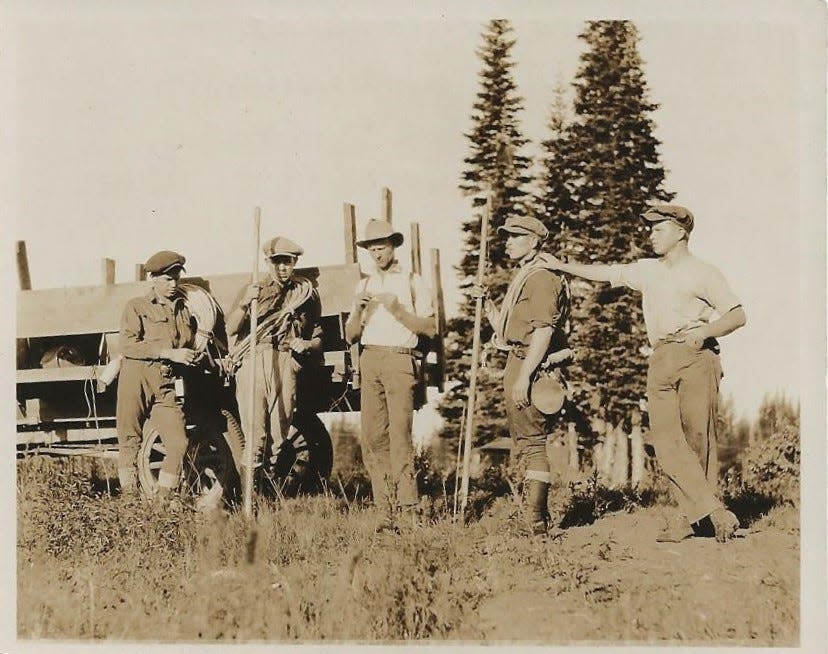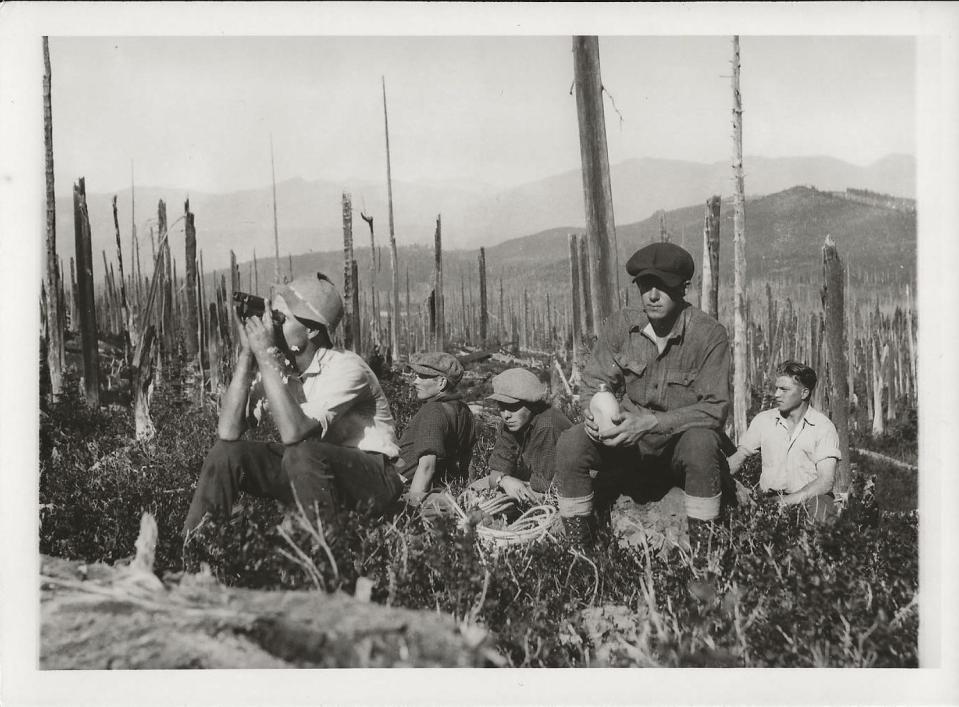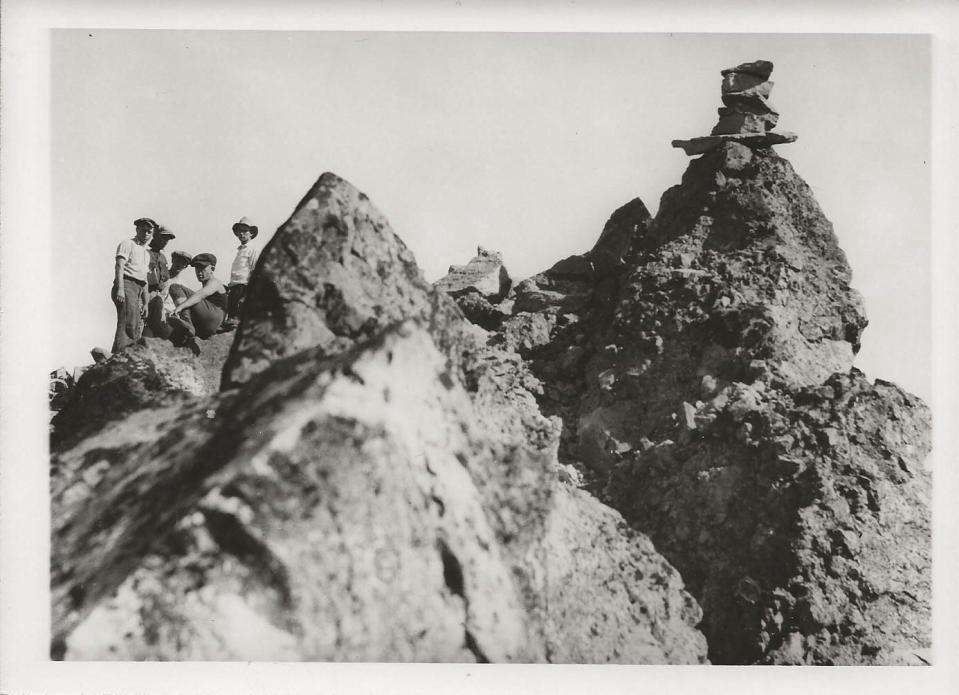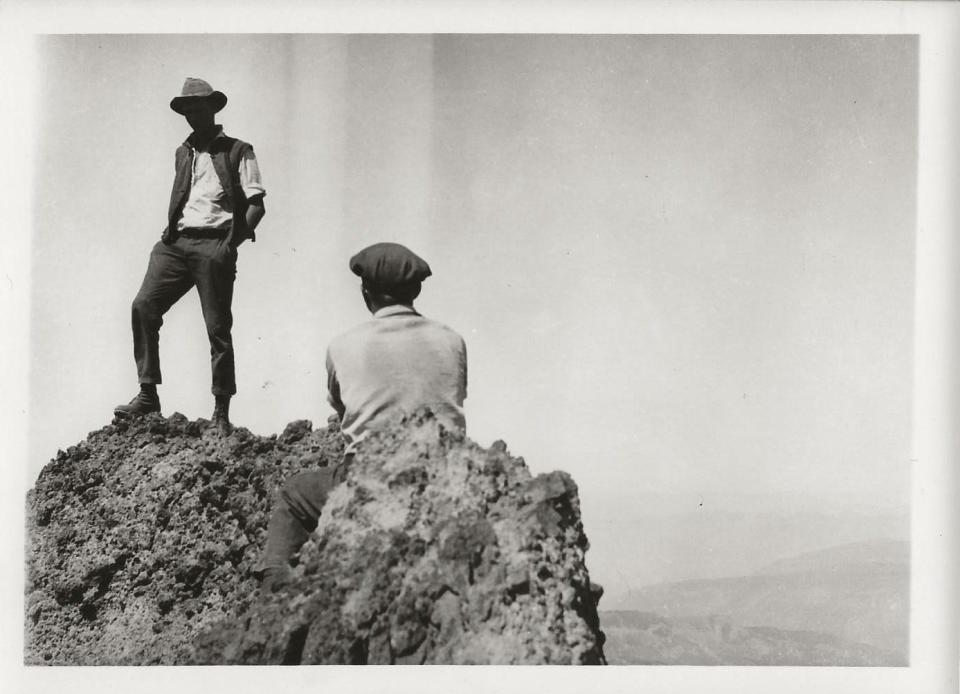‘Boys from Bend’ first to climb Oregon's Mount Washington, Three Fingered Jack 100 years ago
The Cascade peaks of Mount Washington and Three Fingered Jack are iconic central Oregon landmarks home to countless adventures. Climbing the mountains? That's another story.
Believe it or not, a ragtag group of youngsters were the first to ascend the peaks 100 years ago, according to Deschutes National Forest record. While much about their lives and motivation has been lost, descendants of one accomplished climber are working to put some of the pieces together.
Suzanne Furrer could be considered the keeper of her father's legacy when it comes to his climbs. Though she wasn’t too interested in Armin Furrer's Cascade range feats before he died when she was a teenager, her interest recently peaked upon discovering a wealth of information through an ancestry website.
“He was born in Switzerland in 1904 and immigrated when he was 4 years old. I never asked him about the trip over, never about speaking the language or his interest in climbing,” Furrer said. “After he was gone, of course there came a bajillion questions.”

With her own children grown up, Suzanne began putting together binders of information for family members, using everything from old newspaper articles to book chapters archived from Oregon’s Mazamas climbing group.
Interest caught on, especially for Suzanne’s son, Kevin Drake, who was naturally drawn to Oregon's peaks as a veteran ski instructor.
“Going over the passes and doing different activities throughout the Cascades on different outings – whether that’s a hiking trip, a hunting trip or a work-ski function – it’s still looking at those mountains and understanding there’s a direct connection between an accomplishment a family member has made and myself,” said Drake, who has taught skiing for 26 years.
Much remains unknown about the climbers, including Furrer, and the experiences of the first climbers. What follows is what we do know.
Who were the 'Boys from Bend?'
Furrer, Wilbur Watkins, Leo Harryman, Ervin McNeal, Phil Philbrook and Ronald Sellars are recorded by the Deschutes National Forest as the first to summit Mount Washington in August 1923 and a week later, Three Fingered Jack.
According to a Deschutes National Forest report, many others attempted the 7,795-foot Mount Washington climb including the famed alpinists of Portland’s Mazamas, who stopped 70 feet short of the summit in 1922.
The boys from Bend High School planned and prepared for Washington and Jack, also known as “the unconquerables,” by first tackling nearby Bachelor Butte, Broken Top and the North Sister.

Their equipment? Climbing boots and 275 feet of rope.
The risks were a selling point, according to Sellars, who wrote about the Mount Washington excursion for the Mazamas publication.
“The sight of a gigantic pinnacle, upon which no other man has ever set foot, is indeed an inspiring one,” he wrote. “In these features of awesome ruggedness and of mysterious attraction, perhaps no other mountain in the Northwest presents a more interesting spectacle than Mount Washington.”
Scaling Oregon's Mount Washington
According to Sellars, the party set out for Mount Washington late on Aug. 25, riding in a Ford truck through the “rough roads” of Santiam Pass. At 1:30 a.m. the party arrived at the Big Lake ranger station for a few hours of sleep before beginning the climb at dawn.
The route was chosen based on binocular guesswork, changing with frequent rests, Sellars reported.
“We reached the hogback (narrow ridge) at 9:30 and seeing that this was a direct route to the north base of the pinnacle, which we had agreed to attempt first, we ascended the mountain over it, each member of the party choosing his own route and setting his own pace,” Sellars wrote.
They soon after reached the base of the pinnacle and discovered “the old rusty can in a cairn of stones” depicting the names of the Mazamas climbers who attempted the summit the year before them. They had reached the most difficult portion of the climb, and discussed their route for more than an hour while finishing their rations and water.
Each climber, starting with McNeal and ending with Sellars, successfully made their ascent one-by-one “without incident.”
“The climb up the pinnacle is not extremely dangerous although the chances are that a fall of any length would end disastrously, as the whole cone is composed of loosely piled rock which avalanches down the cliffs upon the slightest pressure,” Sellars reported.

At the summit, the boys admired their past and future adventures, but soon began work on leaving their mark for those who would follow them.
“We prepared our tube, which we left on top containing our names,” Sellars wrote. “Each climber left a small article to be returned to him by future climbers, and a brief account was written by McNeal and signed by other members of the party. We then erected a cairn of stones, some 10 feet to the east of the extreme pinnacle and buried the tube among the rocks.”
Two years later, two others would complete the climb and return articles, including a small silver belt chain belonging to Furrer and a .21 caliber cartridge belonging to Watkins, to The Bend Bulletin for them to retrieve.
Three Fingered Jack proves more challenging, less well-known
The Mazamas declared climbing Washington alone “an epochal feat of Northwest mountaineering,” The Bend Bulletin reported.
Yet, Furrer, McNeal, Harryman and Philbrook returned the following weekend to tackle Jack, joined by fellow climbers Ernest Putnam and Elmer Johnson.
While the Mazamas lack a chronicle of this adventure, an article from the Portland Tribune states the 7,844-foot Jack “presented a more prolonged hazardous exposure and a greater obstacle” than Washington, with shattered rocks at the peak.

A Deschutes National Forest report said the boys approached the climb from the west side of the shield volcano, and in the final stage of the climb, moved over a 26-feet-long and 18-inch-wide hogback.
“The final climb of the peak necessitated a nearly perpendicular climb of over 70 feet,” the Portland Tribune wrote in a 2020 article. “The alpinists claimed that the rugged spire seemed to vibrate as they chipped a niche for a container holding their names.”
Cementing a climbing legacy
Both climbs cemented the young mountaineers’ legacy, though they would continue pioneering different Cascade routes and climbs separately and together.
“The two peaks that had long defied attempts at reaching their summits had been conquered in a span of one week by the group of young local climbers," the Portland Tribune said. "It was an accomplishment that was hailed by fellow climbers throughout the Northwest and made the young men part of the early legendary lore of local mountaineering.”
Olivia Stevens is an intern sports reporter at the Statesman Journal. She can be reached at ostevens@statesmanjournal.com or on Twitter @byoliviastevens.
This article originally appeared on Salem Statesman Journal: Who climbed Mount Washington, Three Fingered Jack first 100 years ago

